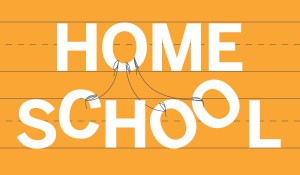Research clearly shows that students whose parents are actively involved with their children’s schools are more likely to stay in school, to exhibit better performance on standardized assessments of basic skills and knowledge, and to attend and graduate from college.
But striking a balance between the needs of students, teachers, and parents has been historically challenging, especially in public education.
The pendulum swings in all directions. For some teachers, it’s a struggle to get parents on board, to earn their trust, or to gain their interest in the education of their children. For others, the demands of uber-involved “helicopter parents” can be overwhelming at best, and overbearing at worst. Some students want their parents to be as active a part of their school lives as possible. Others cringe at the thought of mom or pop showing up to staple bulletin boards, stuff envelopes, deliver baked goods, or worse, attend the dreaded parent-teacher conference.
Still, we know that students learn best in a community that involves their families on a healthy level. Parents who understand the expectations in the school setting are more likely to reinforce those expectations at home. Overworked teachers, especially in today’s underfunded schools, legitimately need the support, and sometimes the elbow grease, of parents who are willing to volunteer their time, efforts, and money to help make projects, access to first rate materials, and a sense of school pride a reality.
Check out this video:
The bottom line is that “good communication between parents and teachers has many benefits. When parents and teachers share information, children learn more and parents and teachers feel more supported. Good communication can help create positive feelings between teachers and parents” (Kreider, Mayer, & Vaughan, 1999).
The good news is that today’s tools, specifically technology tools, can help make the home-school connection a reality, with less cost and effort for all involved, than ever before.
“Innovative technologies such as cell phones, e-mail, and websites provide schools with new tools for reaching middle school parents and keeping them informed about their children. Traditional methods of communication such as face-to-face meetings have been found to be effective (Decker & Decker, 2003); however, these methods require time that both working parents and teachers may lack” (Rogers & Wright).
The days of the class newsletter being sufficient are over. “Educators are often very good at mass communications via newsletters, calendars, letters, and handbooks, but mass communications are not effective in shaping or changing attitudes” (Rogers & Wright). What we need to see more of isn’t a folder stuffed with impersonal, though informative, letters home. What we need to see is communication from school to home and home to school moving at the speed of communication in most other areas of our lives.
When my friend in Rhode Island applied for a new job, I knew about it within minutes, thanks to social networking. When my boss needs something and I’m not in the office, well, an email gets the message to me and enables me to deliver the results the boss needs, on the fly. In fact, I can access documents on the major projects of most of my colleagues from anywhere in the world, thanks to Google Docs. So why, as a parent, shouldn’t I be able to access my child’s curriculum? Of course I should. And technology makes that possible.
The school website can be a key component of creating a legitimate, instantaneous home-school connection. “Electronic communication formats such as websites give families access to homework information and requires little time or effort to access” (Decker & Decker, 2003). Use of school websites to provide this type of information is on the rise. And in true Web 2.0 spirit, teachers and administrators aren’t the only ones generating content for school websites.
“Increasingly, school Web sites are used to convey a broad range of school information. Students often become involved with both the technology and the content of the Web site and may work together with teachers to create and maintain the site” (Graham-Clay).
At the end of the day, most educators and parents both have at least reasonable access to a wealth of tools which can help to support the development of a speedy, open dialogue and the rapid and broad sharing of important information.
With the amazing tools available today, the old-school notes home just aren’t cutting it anymore.
For some great ideas, check out these links on bringing the home-school connection into the 21st century:
21st Century Home-School Connection
Tips for Teachers: Using Technology to Connect with Parents
References
Connecting Home and School.mov. (2010, August 29). Retrieved from YouTube: http://www.youtube.com/watch?v=WePtZKvn8q0&feature=youtu.be
Dwyer, L. (2010, March 19). Connecting the Schoolhouse to Your House. Retrieved September 20, 2011, from Good Education: http://www.good.is/post/connecting-the-schoolhouse-to-your-house/#access_token=122966314909%7C2.AQDie377uuqNctic.3600.1316642400.1-1418244405%7C-mtHp853LqIwilwf6fVbwItZSHw&expires_in=4626
Graham-Clay, S. (n.d.). Communicating with Parents: Strategies for Teachers. Retrieved September 20, 2011, from The School Community Journal: http://www.adi.org/journal/ss05/Graham-Clay.pdf
Kreider, H., Mayer, E., & Vaughan, P. (1999, May). Helping Parents Communicate Better with Schools. Retrieved September 20, 2011, from Harvard Family Research Project: http://www.hfrp.org/publications-resources/browse-our-publications/helping-parents-communicate-better-with-schools
MED 7305. (2011, January). Using Technology to Communicate with Parents. Retrieved September 20, 2011, from Parent Communication Project: http://parentcommunication.wordpress.com/about/
Rogers, R., & Wright, V. (n.d.). Assessing Technology’s Role in Communication between Parents and Middle Schools. Retrieved September 20, 2011, from Electronic Journal for the Integration of Technology in Education, Vol. 7: http://ejite.isu.edu/Volume7/Rogers.pdf
